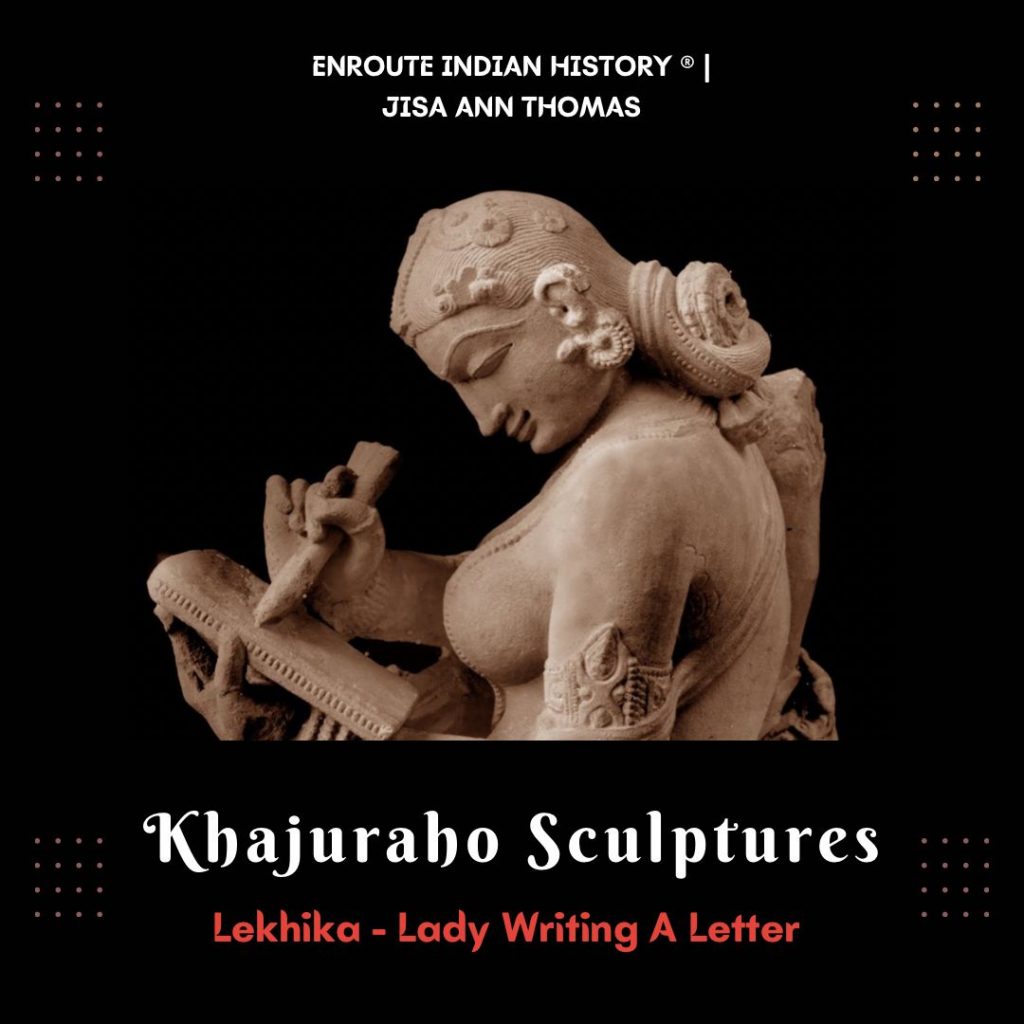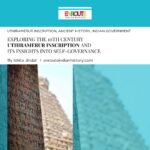
Article By EIH Researcher And Writer
Jisa Ann Thomas
Khajuraho is an ancient city known for magnificent temples and intricate sculptures located in the Chhatarpur district of Madhya Pradesh. Built in the medieval century by the Chandela Dynasty, the UNESCO site of ‘Khajuraho Group of Monuments’ is famous for its Nagara-Style architecture and graceful sculptures of nayikas and deities. Built between 950-1050 AD by the Chandela Dynasty, these temples represent various forms like meditation, spiritual teachings, relationship, through stimulating art. The temples are famous for its craftsmanship that consist of splendid demonstrations of fine sculptures and exceptional architectural skill. These temples are divided into three groups: Eastern, Western and Southern.
Women have been profusely depicted on the temples of Khajuraho. ‘Silpa Praksha’, a 10th century art text from Orissa describes and instructs the sculptor on the 16 types of women who best decorate a monument” and how they should be carved “within the confines of an upright angle.” These 16 kinds of women include ‘darpana’ (looking into a mirror), ‘alasa’ (relaxed and indolent), ‘ketaki-bandha’ (adorn herself with ketaki flower), ‘nartaki’ (a dancer), ‘vinyasa’ (pensive) etc. The various sculptures of women can be categorized into- heavenly fairy-dancer (apsaras), youthful heavenly nymphs (surasundaries), youthful human (nayikas) and women sporting with trees (salabhanjikas). They are figured either in round or in high or medium relief on the outer or inner walls, pillars and ceilings. The sculpture of women of Khajuraho seems to belong to three worlds.
These heavenly nymphs are elegantly beautiful, full of sexual charm and vigor. As ‘apsaras’, they are carved as dancing in various postures. As attendant of higher divinities, they are carved with folded hands or carrying lotus flowers, mirror, water jars, raiment and ornaments etc. offerings to the deities. But more frequently these ‘surasundaries’ are depicted as expressing common human moods, emotions and activities. They are thus shown yawing, stretching, scratching their backs, touching their breasts, rinsing water from their wet hair plaits, removing thorns from their feet, fondling babies, playing with pets like parrots and monkeys, writing letters, playing on flutes or the vina, painting designs on walls or bedecking themselves in various ways by painting their feet with henna, applying collyarium to their eyes, applying vermillion in their partings or bindis on the forehead etc. The above sculpture is titled as ‘Lekhika: Lady writing a letter from Khajuraho.’ Her hairdo is very neatly done and is embedded with flowers, ‘mukta-mala’ and the ‘maang tika’.




















